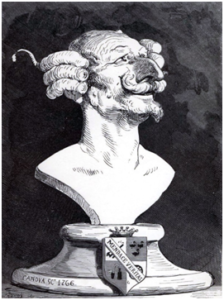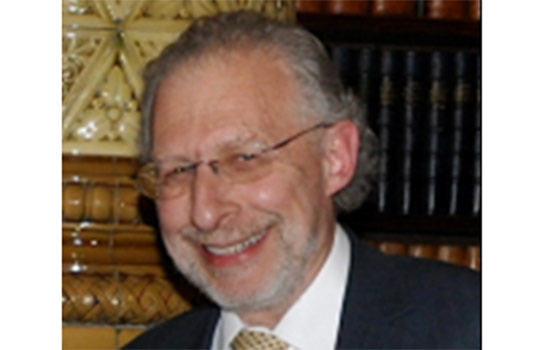 Fake news is in the news. So what about fake illnesses?
Fake news is in the news. So what about fake illnesses?
When Richard Asher described “a common syndrome, which most doctors have seen, but about which little has been written”, he called it Munchausen’s syndrome, because “the persons affected have always travelled widely; and their stories, like those attributed to [the famous Baron von Munchausen], are both dramatic and untruthful”.
Much correspondence followed. Paul Wingate, protested that the original Baron was “far too wise a fool ever to have put himself in peril of having to undergo an abdominal operation” and suggested calling the syndrome after the Wandering Jew, Ahasuerus, “bearing in mind the amount of myth associated with these patients, their constant suffering, their lack of any fixed abode, their multiplicity of names, and their apparent immortality”. And Sven-Gösta Sjöberg wrote to say that in Sweden sufferers were called Köpenickiades, after the German town of Köpenick, the scene of a famous hoax in 1906. However, the name of Munchausen stuck.
Baron Munchausen appeared in five stories (chapters two to six of the modern version), published in English in 1785, titled Baron Munchausen’s Narrative of his Marvellous Travels and Campaigns in Russia. No copies of the first edition survive, but a second edition with the same title appeared in 1786, soon to be followed by an enlarged version, titled Gulliver Reviv’d: The Singular Travels, Campaigns, Voyages and Sporting Adventures of Baron Munnikhouson commonly pronounced Munchausen. Subsequent editions were further enlarged by different hands, and the work as we now know it appeared as the seventh edition in 1793, although other additions and adaptations have since appeared. My favourite edition is Thomas Seccombe’s of 1895, with its wonderful pen and ink illustrations by William Strang and J B Clark.
The original five tales were by Rudolph Erich Raspe, who came to England from Germany in 1775, after having been discovered stealing the coins of which he was the curator at Cassel in Hesse. Raspe’s inspiration was the real life Baron Hieronymus Karl Friedrich Freiherr von Münchhausen (Monkhouse, as we would say), at whose mansion in Bodenwerder on the river Weser he had been an occasional visitor.
The Baron was born on 11 May 1720, became a cornet in the Russian Brunswick Regiment in 1740, rose to captain, and retired to live on his estate and tell extravagant stories about his adventurous life. Raspe, penniless in London, recalled the Baron’s stories, co-mingled them with other tales that he had read and recorded in his commonplace book, changed the spelling of the Baron’s name, and gave birth to Munchausen (pictures). The memoirs of the fictional Baron, published in a German translation (as “Münchhausen”) by Gottfried August Bürger in 1786, greatly offended the real Baron. He was plagued by inquisitive visitors, and fictions arose about the wild eyed way in which he thundered out his tales. He died in 1797, a bitter man.


Baron Münchhausen (by G Bruckner) and Baron Munchausen (by Gustave Doré)
Munchausen’s syndrome comes in many different forms, with fanciful names such as laparotomophilia, cardiopathia fantastica, and pseudologia fantastica. A recent report of a woman who faked her own genetic test report demonstrates the continual inventiveness of its sufferers. Some patients have published fictitious information on the internet and some have misused internet support groups; clues to their detection have been outlined.
In 1977 Roy Meadow described two children whose illnesses were caused by their parents, and titled his paper “Munchausen syndrome by proxy. The hinterland of child abuse”. Soon after, Burman and Stevens, under the title “Munchausen family”, suggested that Munchausen syndrome by proxy should be called Polle syndrome, after a supposed daughter of the Baron who died young. However, research into the history of the Baron’s family showed that this name was inappropriate.
At the age of 74, after a long, happy, but childless first marriage, the Baron married Bernhardine von Brunn, a 17 year old flirt, who soon afterwards, feigning illness, holidayed in Piermont; nine months later she gave birth to a daughter, Maria Wilhelmina, whose birth and baptism were registered in the Lutheran Church of Polle, a small town on the Weser, near the Baron’s estate in Bodenwerder. The Baron disclaimed paternity and divorced Bernhardine. Maria Wilhelmina died with seizures at 10 months. There is no evidence that the Baron abused Bernhardine’s daughter. The term “Polle syndrome” should not be used.
Finally, back to fake news. Which has Munchausen’s syndrome? The press or the president?
Jeffrey Aronson is a clinical pharmacologist, working in the Centre for Evidence Based Medicine in Oxford’s Nuffield Department of Primary Care Health Sciences. He is also president emeritus of the British Pharmacological Society.
Competing interests: None declared.
